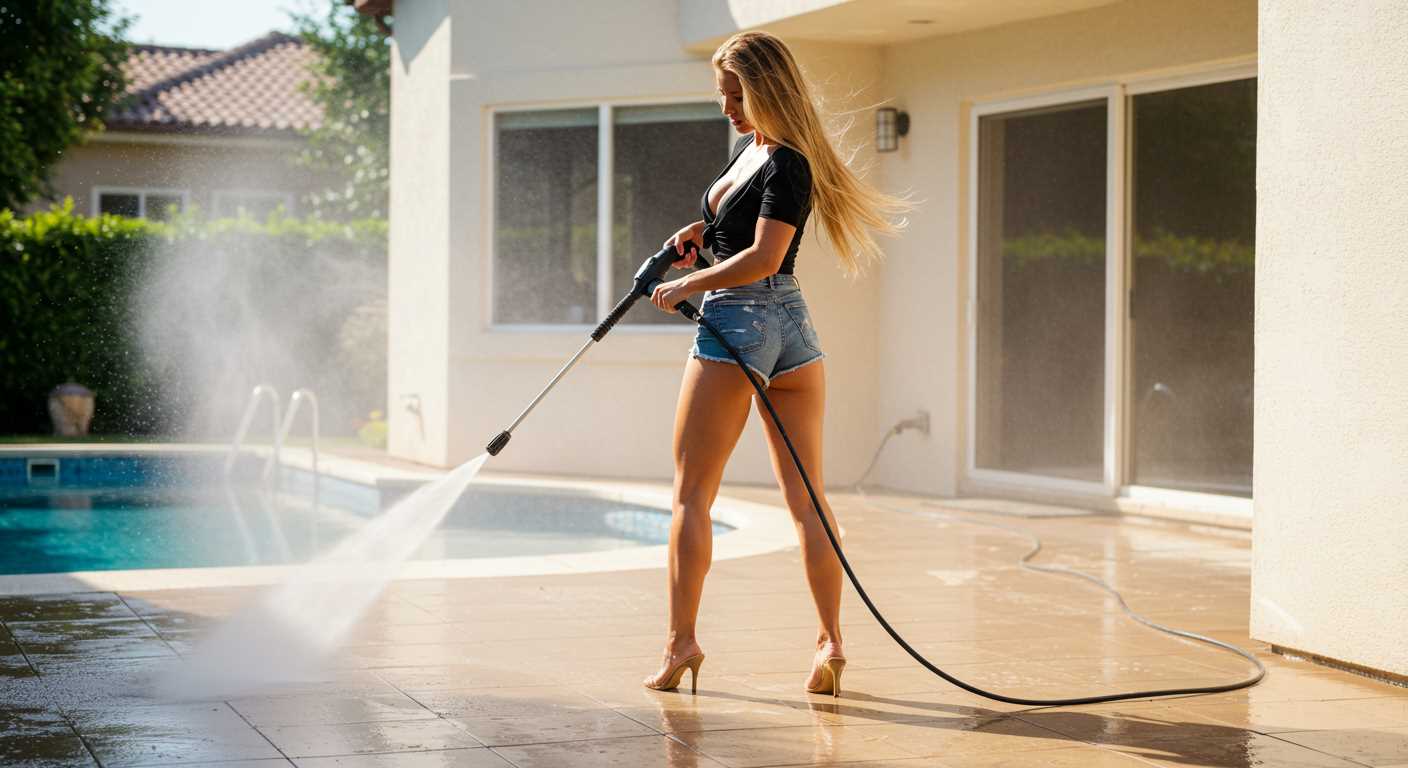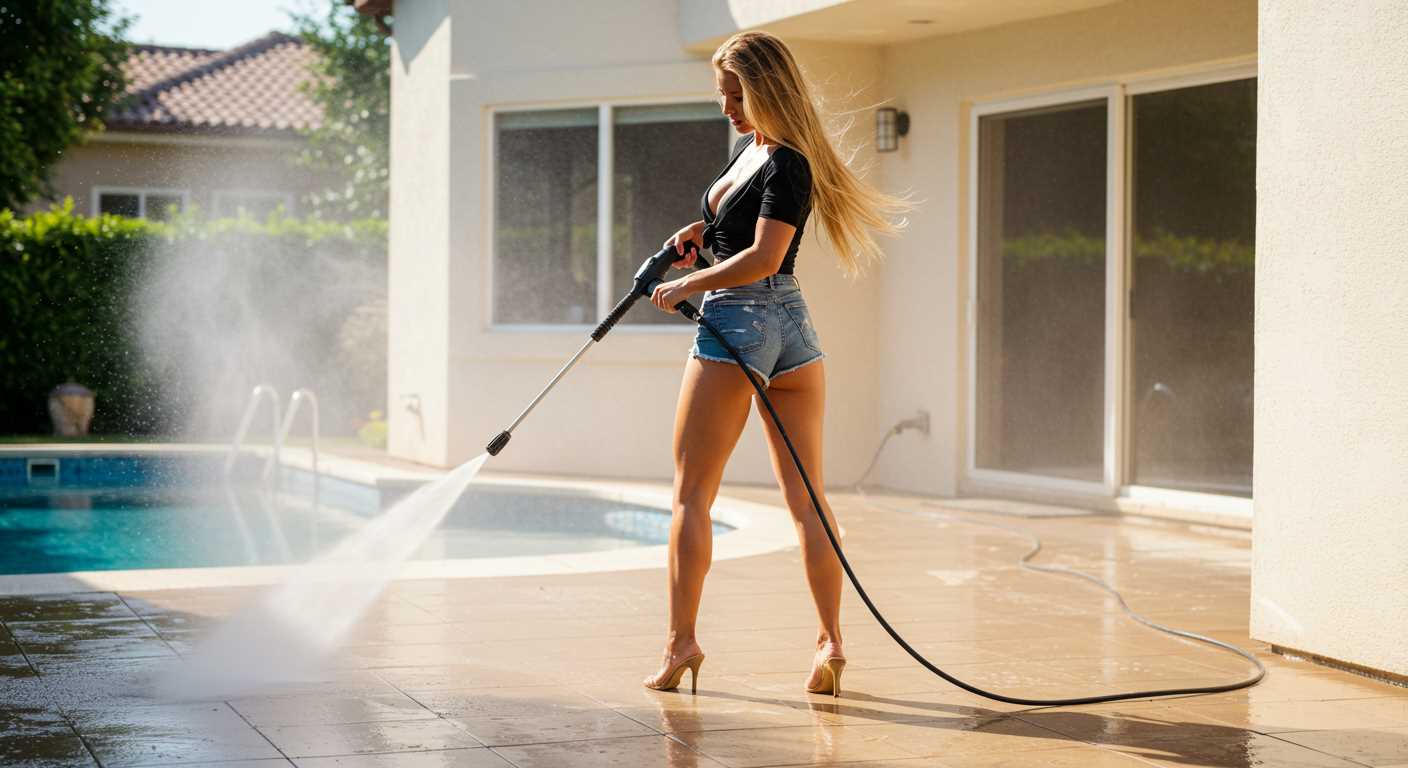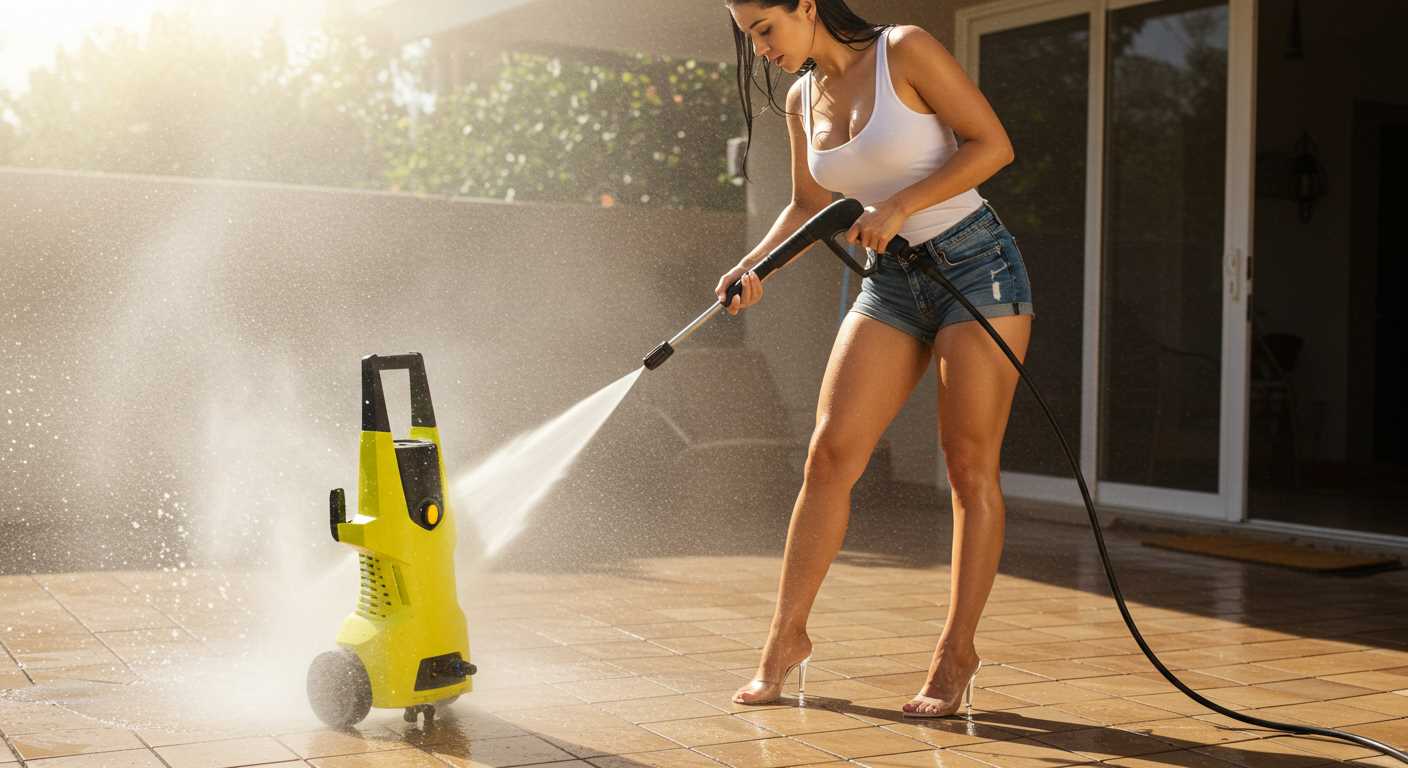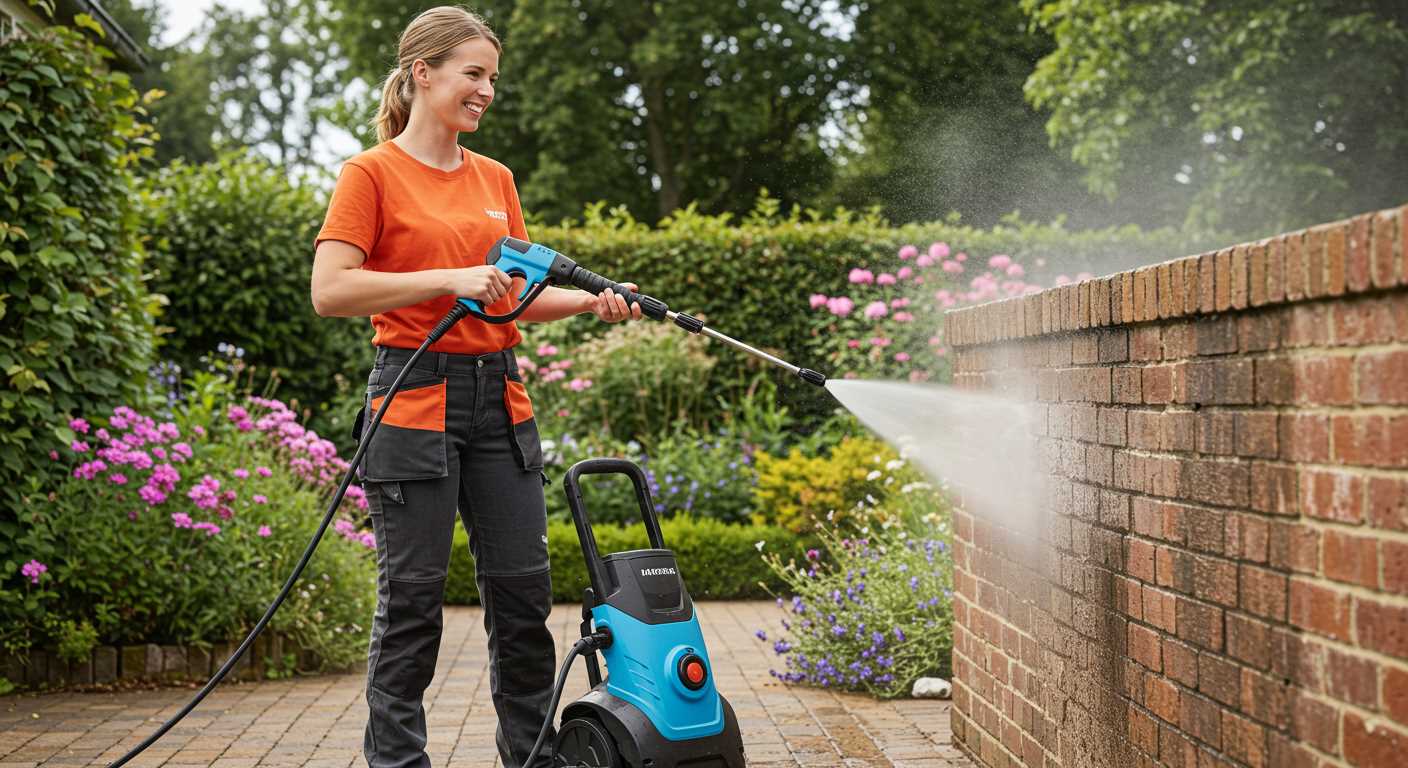




First things first: disconnect the power supply and the water source. Safety is paramount. Once you’ve ensured that everything is off, inspect the inlet filter. A clogged filter can prevent water from flowing properly, causing the machine to stall. Cleaning or replacing this component often resolves the issue instantly.
Next, check the nozzle. Over time, debris can accumulate, leading to blockages. A simple solution is to soak the nozzle in a mixture of warm water and vinegar to dissolve any grime. If the blockage persists, using a small wire to gently clear the nozzle might do the trick.
Another common culprit is the pump itself. If the device has been sitting unused for a long period, the oil inside may have thickened. This can hinder its performance. I recommend changing the pump oil and running the unit with fresh oil for a short period to see if that clears up the issue. Regular maintenance goes a long way in prolonging the lifespan of your equipment.
Finally, listen for sounds that indicate a malfunction. If you hear unusual noises while attempting to start the unit, it might signal a more serious internal issue. In such cases, consulting the manual for troubleshooting steps or contacting a qualified technician may be necessary to avoid further damage.
Identify the Cause of the Lock-Up
To address the issue of a non-functional cleaning device, pinpoint the root of the malfunction first. In my years of experience, I’ve encountered several common culprits.
Common Causes
- Water Supply Issues: Insufficient or blocked water intake can cause operational failure. Check hoses for kinks, clogs, or leaks.
- Detergent Build-Up: Using the wrong cleaning agents or excessive soap can lead to internal blockages. Inspect the detergent tank and lines for residue.
- Mechanical Failures: Components such as the motor, pump, or valves may become damaged or worn over time. Listen for unusual noises or check for vibrations when attempting to operate.
- Thermal Overload: If the appliance overheats, it may shut down automatically. Ensure it’s been allowed to cool down if it has been used extensively.
Diagnostic Steps
- Disconnect the power supply and examine hoses and connections.
- Inspect the inlet filter for debris.
- Check the spray nozzle for clogs.
- Look for any visible signs of damage on moving parts.
By systematically assessing these areas, you can identify what’s causing the stoppage. Once you’ve determined the issue, the next steps can be taken to resolve it effectively.
Check the Oil Level and Quality
Inspecting the oil level and its condition is a critical step for troubleshooting an equipment that’s not operating smoothly. I once encountered a stubborn unit that refused to budge. After checking the oil, I discovered it was not only low but also contaminated with dirt. This can lead to significant internal damage if not addressed promptly.
Steps to Check Oil Level
1. Ensure the machine is off and cooled down.
2. Locate the oil dipstick, usually found near the engine.
3. Remove the dipstick, wipe it clean, and reinsert it to check the level.
4. If the oil is below the recommended mark, top it up with the appropriate type.
Assessing Oil Quality
Clear oil is what you want to see. If it appears dark, gritty, or has a burnt smell, it’s time for a change. I recall one instance where I neglected this aspect, and the resulting engine issues were costly. Regular oil changes not only improve performance but also extend the lifespan of the machinery.
| Oil Condition | Action Required |
|---|---|
| Clear and Bright | No action needed; maintain regular checks. |
| Dark and Gritty | Change the oil immediately. |
| Burnt Smell | Replace oil and inspect for overheating issues. |
Stay attentive to these details to prevent further complications. If you’re interested in preserving other equipment, you might find it helpful to read about how to can fresh green beans without a pressure cooker for more maintenance tips. Keeping everything in prime condition will save you time and money in the long run.
Inspect the Pump for Blockages
Begin by disconnecting the water supply and power source. Carefully remove the pump cover to gain access to the internal components. Look for any signs of debris or buildup that could impede movement. Common culprits include dirt, sand, or even bits of rubber from worn seals.
During my years in the field, I encountered numerous cases where a simple blockage led to major issues. In one instance, a client reported complete failure. Upon inspection, I found a small pebble lodged in the inlet filter. After clearing it, the unit operated smoothly again. This highlights the importance of thorough checks.
Inspect the inlet and outlet ports for clogs. Use a flashlight to look deep within the pump. If you spot any obstructions, carefully extract them using needle-nose pliers or a small brush. Avoid using sharp tools that could damage internal parts.
Don’t forget to check the O-rings and seals for wear. Sometimes, blockages can stem from a deteriorating component that allows debris to enter the pump. If you notice any cracks or breaks, replace those parts to prevent future issues.
After clearing any blockages, reassemble the pump, ensuring everything is fitted securely. Test the machine with water to confirm that it operates without resistance. An unobstructed flow should be evident, indicating that you’ve successfully addressed one potential cause of malfunction.
Examine the Motor and Electrical Components
Start by inspecting the motor for any signs of damage or wear. Look for burnt wires, corrosion, or frayed connections. These can indicate electrical issues that may prevent the unit from operating correctly. A quick visual check can reveal whether the motor is seated properly and if all connections are secure.
Check the Power Supply
Ensure that the power source is functioning. Use a multimeter to measure voltage at the outlet. If the voltage is inconsistent or absent, the issue lies beyond the equipment itself. If the power supply is adequate, move on to the power cord. Look for cuts or kinks that could interrupt the flow of electricity.
Inspect the Switch and Circuitry
Next, examine the on/off switch. A malfunctioning switch can prevent operation. Test the switch with a multimeter to confirm continuity when engaged. If the switch is faulty, replacing it may restore functionality. Additionally, check for any blown fuses within the machine’s circuitry. A blown fuse can be a simple yet effective fix that allows the device to run again.
Test the Pressure Relief Valve Functionality
To ensure proper operation, check the functionality of the pressure relief valve. Start by locating it, usually situated near the pump. This component is crucial as it prevents excess pressure buildup, which can lead to damage or malfunction.
With the unit powered off, manually pull the valve’s release lever. You should hear a distinct hissing sound as any residual pressure escapes. If this sound is absent, the valve may be stuck or malfunctioning. In such cases, cleaning it with a suitable solvent can often restore its operation. Make sure to inspect the valve seat for debris or wear, as these can hinder performance.
After cleaning, reassemble the valve and run the machine briefly. Observe if the valve engages appropriately during operation. If pressure builds excessively, there’s a chance the valve needs replacement. In my experience, a functioning relief valve is essential in maintaining the integrity of the entire system, so don’t overlook it.
Lastly, keep in mind that regular maintenance of this component can extend the life of your equipment. I’ve seen many units suffer from preventable issues simply because the relief valve wasn’t inspected regularly. It’s a small but significant part of the machinery that deserves attention.
Perform maintenance and preventive measures
Regularly cleaning and inspecting your equipment can save you from larger issues down the line. After each use, I recommend flushing the system with clean water. This helps to remove any detergent residues that could cause blockages or damage.
Change the oil in the engine and pump as specified in the manufacturer’s manual. During my tenure as a consultant, I often found that neglecting oil changes led to severe wear and tear. Use the right type of oil to ensure proper lubrication and cooling.
Every few months, I suggest checking the seals and O-rings in the pump and connections. If these components wear out, they can lead to leaks and reduced performance. I’ve seen many units suffer from poor maintenance in this area.
Storage is another critical aspect. If you live in a colder climate, always store your device in a frost-free environment. I recall a colleague who left his unit outside during winter. The freezing temperatures caused significant damage, leading to costly repairs.
Investing in quality accessories, such as cordless pressure washers, can enhance your experience while maintaining your equipment. These models often come with advanced features that require less upkeep and can simplify routine maintenance tasks.
Lastly, keep the user manual handy. Referencing it regularly can remind you of specific maintenance tasks and schedules that are crucial for your device’s longevity. I’ve often found that those who engage with their manuals tend to have fewer issues overall.
FAQ:
What are the common causes of a pressure washer getting locked up?
A pressure washer can become locked up for a variety of reasons. One common cause is a lack of maintenance, which can lead to the pump seizing due to debris or dirt buildup. Another reason might be that the water supply is insufficient, causing the pump to run dry and overheat. Additionally, a faulty pressure relief valve or damaged internal components can also result in the machine locking up. It’s important to regularly inspect and maintain your equipment to prevent these issues.
How can I tell if my pressure washer is locked up?
If your pressure washer is locked up, you might notice that the engine or motor will not start, or it may start but not build pressure. You may hear unusual noises, such as grinding or clunking sounds, when attempting to operate it. Another sign is that water does not flow through the nozzle or that the pressure gauge shows no readings despite being turned on. If you suspect your unit is locked up, it’s best to turn it off immediately to prevent further damage.
What steps should I take to troubleshoot a locked pressure washer?
To troubleshoot a locked pressure washer, first, ensure it is turned off and unplugged. Check the water supply to make sure it’s connected properly and that there are no kinks in the hose. Next, inspect the pump for any visible signs of damage or debris. You can try to manually rotate the crankshaft to see if it moves freely. If it doesn’t, the pump may need to be disassembled for further inspection. Always consult your user manual for specific instructions related to your model.
Can I fix a locked pressure washer myself, or should I call a professional?
Whether you can fix a locked pressure washer yourself depends on your comfort level with mechanical repairs. If you have experience with tools and machinery, you might be able to identify and resolve minor issues like debris blockage or loose connections. However, if the problem seems more complex, such as internal pump damage, it may be advisable to consult a professional. They have the expertise and tools to diagnose and repair the unit safely and effectively, which can save you time and prevent further damage.
What maintenance can prevent my pressure washer from locking up in the future?
To prevent your pressure washer from locking up, regular maintenance is key. Always flush the system with clean water after each use to remove dirt and debris. Check and replace the oil as recommended in your manual, and inspect the hoses for wear and tear. Additionally, ensure that the water supply is adequate before starting the machine. Storing the pressure washer in a dry place and protecting it from extreme temperatures can also help extend its lifespan and functionality.






.jpg)


